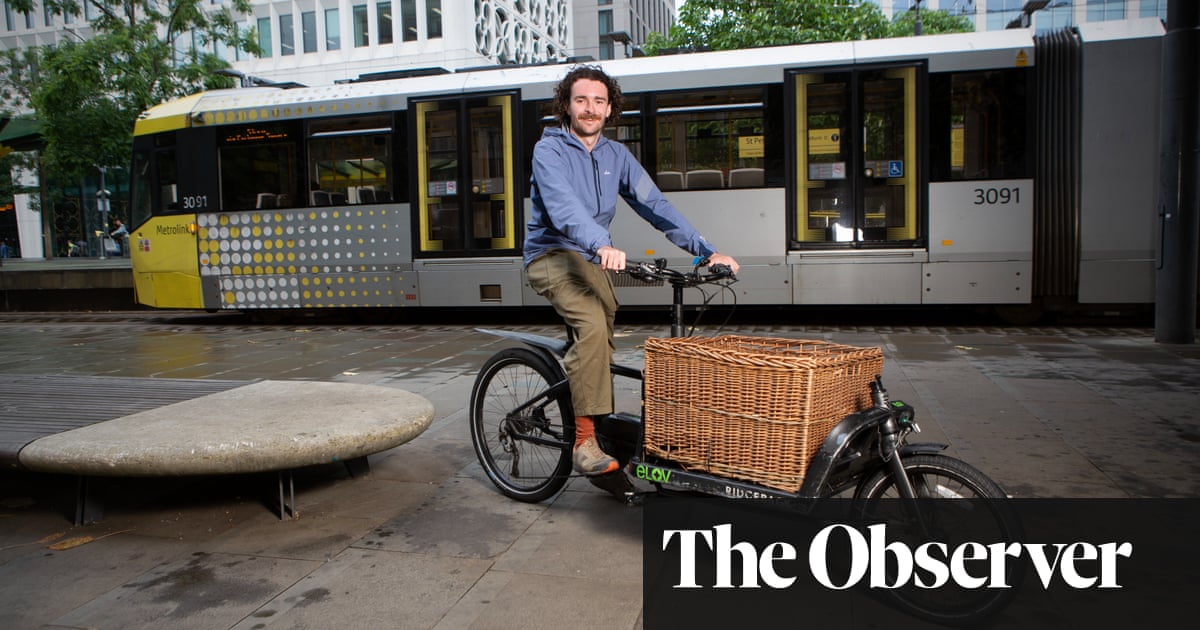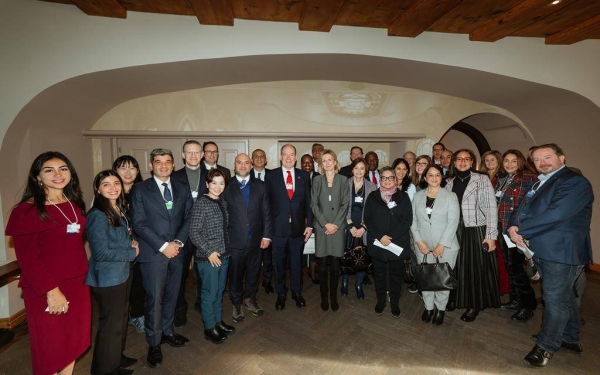
LONDON, Oct 27 (Thomson Reuters Foundation) - While training for the London Marathon in 2014, Sadiq Khan - then a British parliamentarian from the south London district of Tooting - found himself gasping for air during runs and discovered he"d developed asthma for the first time in his life.
Since becoming the capital"s mayor in 2016, the Labour Party politician has made cleaning up London"s air a top priority, through measures from electrifying its pollution-belching diesel buses to installing an advanced air quality monitoring system.This week, a Central London Ultra Low Emission Zone (ULEZ) Khan launched in 2019 expanded to 18 times its initial size, to cover large parts of London.
Drivers of older polluting cars, vans and motorcycles must pay £12.50 ($17.20) a day to enter the 140-square-mile (360-sq-km) area - a powerful incentive to invest in greener transport.Two years after the first ULEZ came into effect, four out of five vehicles entering the original zone now meet cleaner standards, and roadside nitrogen dioxide, a major air pollutant, has fallen by more than 40%, the mayor"s office said.
That is a change Khan - brought up on a council-run housing estate and the son of a Pakistani immigrant bus driver - wants to see happen across London.Expanding the anti-pollution zone will allow 4 million more Londoners to breathe healthier air and help tackle climate change at the same time, he said.
"I"ve got skin in the game," Khan, a former human rights lawyer, told the Thomson Reuters Foundation in an interview.
FRAGMENTED ACTION
London is part of the C40 Cities network, a global group of nearly 100 major metropolitan areas working to drive faster action on climate change and improve residents" lives. https://www.c40.org/
The cities have all committed to deliver climate action plans that spur uptake of clean energy, adapt to warming impacts and turn the Paris Agreement on climate change into reality.
London - which has pledged to reach net-zero carbon emissions by 2030 - is implementing a range of actions, from installing electric vehicle charging points to preparing people and infrastructure to deal with worsening floods and heat.
England"s capital now has the largest number of electric buses of any European city, according to the mayor"s office, which has committed to a fully zero-emissions fleet by 2034.
The Greater London Authority - headed by Khan, who will become C40"s new chair in December, following the COP26 U.N. climate talks in Glasgow - has also divested nearly all of the city"s pension funds from fossil fuels.
But as London rushes to slash emissions, much of what still needs to happen lies outside the mayor"s control, which is limited to things like transport and policing.
Funding for retrofits for 3.8 million draughty London homes, for instance, is largely controlled by the central government.
In addition, much of the practical action needed to cut planet-heating emissions on the ground - from issuing planning permits to managing waste disposal - lies with the 32 local authorities, called boroughs, that make up Greater London.
"TEA COZY" HOMES
Ealing in west London, one of London"s larger boroughs with more than 340,000 residents, declared a "climate emergency" earlier this year and set new strategic priorities, including creating jobs and boosting equity for its residents.
The council also plans to retrofit 5,000 social housing homes with full exterior insulation - "like a tea cozy" - as well as triple-glazed windows, heat pumps and solar panels with battery systems, said Deirdre Costigan, its deputy leader.
Once finished, the homes are expected to be able to run without grid electricity, cutting costs for the most vulnerable who will pay only a small monthly energy fee to the council to help fund the next round of retrofits.
"Climate justice is not just about those suffering climate impacts but about the poorest not paying big bills," said Costigan, standing in front of one of the butter-coloured two-storey houses slated for work on the council"s "Trees Estate".
Asma Yaqub, 42, is among the occupants who will benefit from the improvements next year, including an electric oven to replace the gas one she uses to bake cakes for a living to support her children.
At first sceptical, she said watching climate change and nature documentaries had changed her mind.
"As a Muslim, I have an obligation to look after the planet and think about future generations and protect them from the mistakes we"re making right now," she added.
Making retrofits work takes upfront investment to convince the community the disruption is worthwhile, but finding the cash for upgrades is tough, with funding in place so far for just 68 of the 5,000 homes Ealing is ready to retrofit, Costigan noted.
Securing far bigger and more predictable investment streams will be key if London is to green its housing stock, she added.
Claire Holland, leader of Lambeth Council in south London, said the British government needed a better strategy to pay for green changes to meet its ambitious goals of cutting planet-heating emissions by 78% by 2035 and to net-zero by 2050.
In both Lambeth and Ealing, training locals for new green jobs and ensuring there are enough skilled workers to handle the scale of required home retrofits are another priority.
Lambeth is working with local schools to prepare the 11,000-12,000 people it will need for planned low-carbon shifts.
"Lots of students can’t afford to go to university. We need to create a pathway for them that is not to zero-hour jobs but to careers" in clean energy, retrofitting and the like, Holland said.
SKILLS SHORTAGE
While progress is being made in pockets, in London - and across the country - efforts to build the businesses needed to deliver net-zero emissions are only just getting started.
By 2035, about 11 million of Britain"s existing homes will need better insulation and new green heating and energy systems to meet emissions goals, according to the Climate Change Committee, an independent advisory body.
The government this month said it would begin providing British homeowners with £5,000 grants to install electric heat pumps, as the country phases out new gas boilers by 2035.
By 2028, Britain needs to install 600,000 heat pumps a year to meet its climate change goals, the government said in 2020.
But today there are only 950 accredited installers, compared to nearly 100,000 fitters of gas boilers and other fossil-fuel heating systems, according to Ashden, a London-based green nonprofit that supports efforts to train workers.
"It’s hard enough in London to find a plumber, much less one of these (heat pump) installers," said David Pierpoint, founder of The Retrofit Academy, a social enterprise that trains project coordinators.
Since late 2018, it has trained about 1,500 people, with the largest number in London and Manchester.
Graduates include Sara Kamal, 28, a design and technical standards officer for the northeast London borough of Hackney, who finished a three-month course in September.
As Hackney works to reach net-zero emissions by 2040, "you need more than just skilled people to install things," she said.
That includes helping homeowners understand how to operate new and unfamiliar systems like heat pumps, she added.
FLOODED STATIONS
As global warming drives extreme weather, the risks of floods and heatwaves are also rising, including to London"s public transport.
Summer downpours closed 31 stations on its "tube" subway network this year, and researchers predict nearly 60 stations are at high risk of flooding, including some of the busiest.
According to the mayor"s office, a quarter of London"s rail stations also could face floods in the future, along with one in five schools and almost half of its hospitals.
Evelyn Kalmar, 64, who regularly travels to her gym at London Bridge by tube, said if stations were frequently shut, "it would make London very difficult to move around and cause a lot of unrest".
The Greater London Authority is stepping up efforts to tackle the threats, from launching climate risk maps overlaid with social vulnerability data to piloting improved drainage systems and issuing heat alerts.
The Thames Barrier, a set of walls that can be deployed across the river to protect London from worsening tidal floods, is also set to be strengthened by 2070.
"If we don"t hold down the temperatures, Londoners need to understand the consequences," said the city"s mayor, Khan.
"This is not an issue we need to worry about in 10 or 20 years" time. This affects us now."












